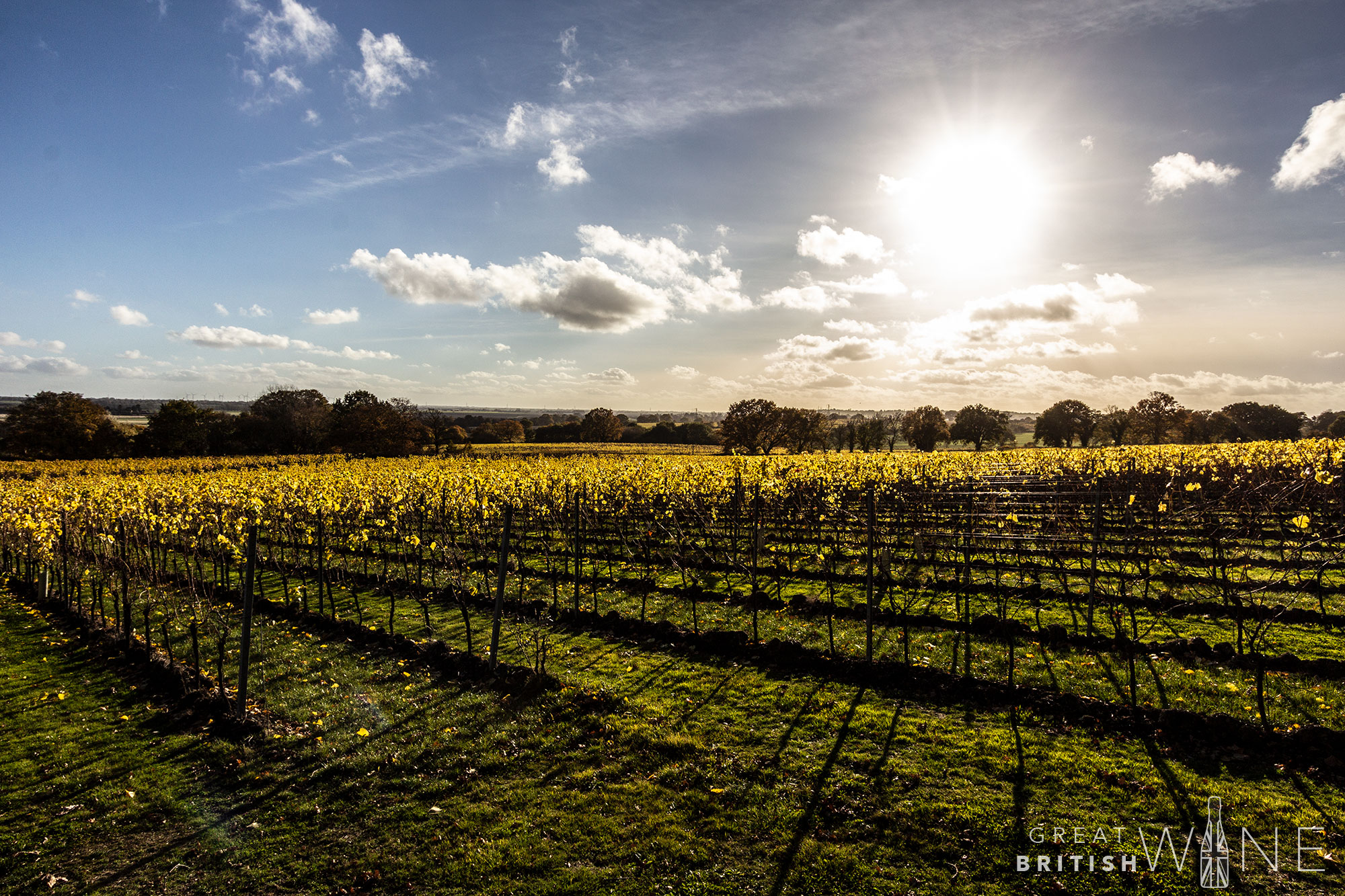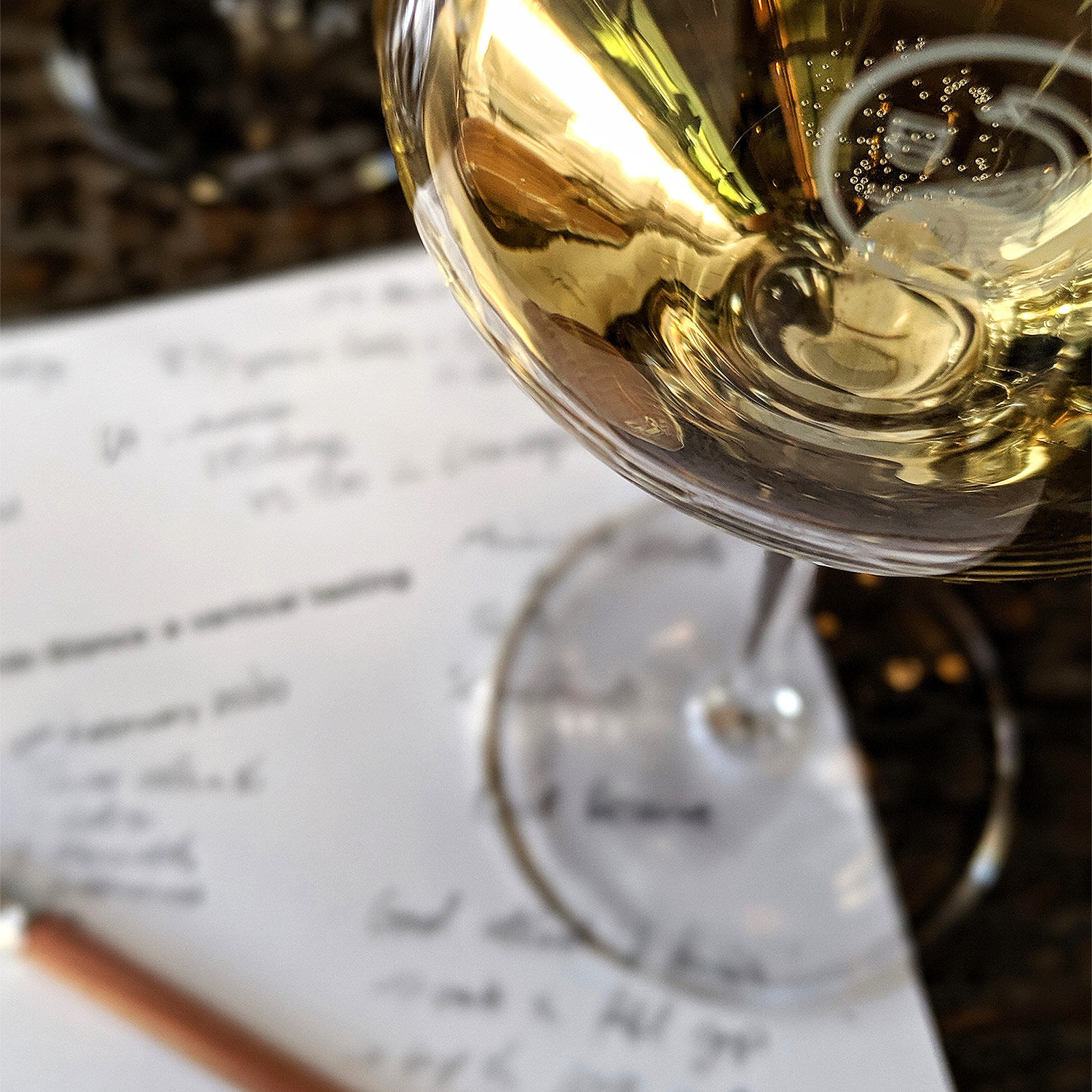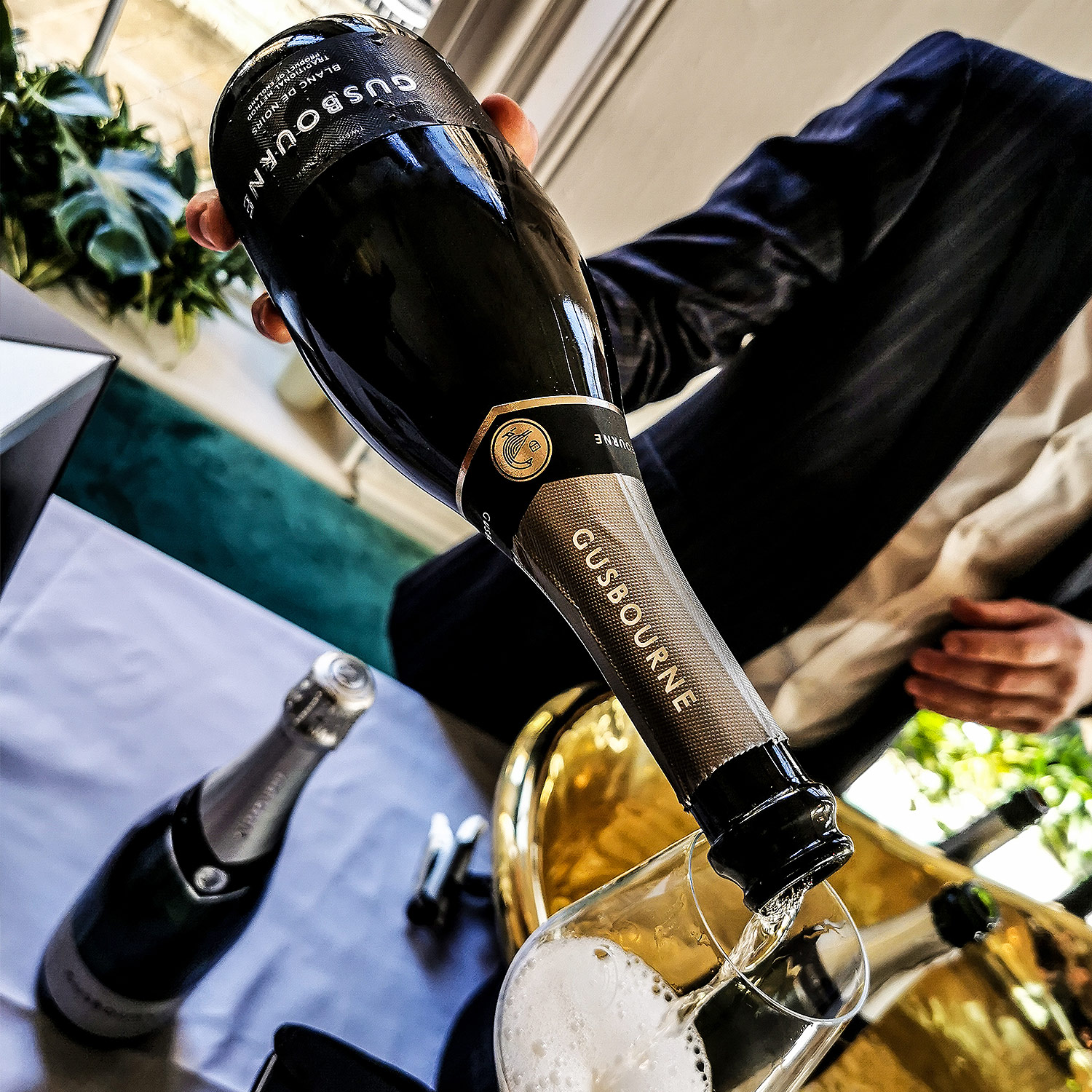
Gusbourne has been one of the leading lights of English sparkling wine production for a good few years. They continue to scoop accolades, export orders and acreage, and show no sign of stopping. Their portfolio tasting last week was not only a chance to taste their latest releases but reflect also on Gusbourne’s approach to English winemaking.
Classic Varieties, Single Vintages
Gusbourne focus on the classic Champagne varieties: Chardonnay, Pinot Noir and Pinot Meunier. These are used to produce all of their wines, including their still wines. Despite that, they are able to produce a large range of still and sparkling wines. With the addition of a Blanc de Noirs, a still rosé and two new iterations of their Chardonnay and Pinot Noir, Gusbourne’s offering is pretty substantial.
They also only produce single vintage wines. While non-vintage blends are a staple of many sparkling wine producers, providing a consistent ‘house’ style, Gusbourne have chosen to embrace vintage variation. They can do this thanks to their plantings in Sussex which have a different terroir to their Kent vineyards. For example, in a cool year, their clay-soiled Sussex sites provide ripeness that might otherwise be lacking from the chalk-dominant Kent plots.
Site selection
Gusbourne make the most of their diverse terroir by vinifying each of their Kent and Sussex plots individually. It’s a mammoth task and requires an infrastructure of 100 tanks and 200 barrels. Their team blind taste each vessel when selecting wine for blending to produce a balance between Gusbourne’s clay and chalk soils. This is crucial in delivering consistency, despite not producing a non-vintage blend.
It also allows the selection of particularly promising batches for special bottlings. These include the Chardonnay 809 2018, named after an especially aromatic clone of Chardonnay, planted on one of Gusbourne’s sites, and the Pinot Noir Barrel Selection 2018, a surprisingly deep English Pinot that is one of the most impressive English reds I’ve tried to date.

Patient ageing
The final component of Gusbourne’s approach is a commitment to extended lees and bottle ageing. This is essential to making Blanc de Blancs, Gusbourne’s signature style. Made entirely from Chardonnay, the Blanc de Blancs style can produce exceptionally elegant sparkling wine. Charlie Holland, Gusbourne CEO and chief wine maker, explains that making great Blanc de Blancs requires a careful balance between citrus fruit, minerality and creaminess.
With England’s cool climate, there is no shortage of freshness and minerality but the final component, creaminess, is achieved during the winemaking process. At Gusbourne, a combination of barrel fermentation and a minimum of 3½ years ageing on its lees, provide a creamy texture and pastry-brioche flavours to balance the high acidity of English chardonnay.
An additional six months in bottle allows these three elements to integrate before the wine is released to the drinking public. The result is a fine balance between fresh, rich and complex flavours. These Blanc de Blancs are made with ageing in mind. Having spent six months on cork before release, the 2015 new release was just beginning to develop some nutty complexity, offering a glimpse of what these wines can achieve.
I was lucky enough to join a dazzling vertical tasting of the Blanc de Blancs, going back to Gusbourne’s first vintage in 2006, which showed off the brilliant ageability of these wines. As we tasted through the 2010, 2008 and 2006, the acidity that is centre stage in youth gracefully stepped aside to make way for flavours of toast, mushroom, truffle, forest floor, caramel, and honey. I defy someone to taste English sparkling wines like these, aged for more than a decade, and tell me with a straight face that the UK does not rival Champagne.
It was an impressive showing from Gusbourne. The new releases of Blanc de Blancs, Brut Reserve and Sparkling Rosé are uniformly vibrant, while soon-to-be released Blanc de Noirs nicely complement the range for those looking for something especially rich. The previous vintages continue to age gracefully, and each has its own personality that will provide something for everyone. Finally, while still wines are never going to be the stars of the show, they are far from a token offering and well worth a try.
Blanc de Blancs Twenty Fifteen
Grapes: Chardonnay
If you wanted to pick a wine to describe an English Blanc de Blancs, it would be this one. The wine is aged for 42 months on lees and an additional six months on cork before release. There are notes of orchard fruit, candied lemon, and flaky pastry. This is fresh and refined, similar in style to the 2013. For those seeking something riper, go for the 2014.
Blanc de Noirs Twenty Sixteen
Grapes: Pinot Noir
I must admit, I love Blanc de Noirs. So, I’m a little biased. That aside, this is a top example of the style. This won’t be produced every year because Pinot Noir is such an important ingredient in the Brut Reserve.
Aged for 24 months on lees and three months on cork, this is noticeably more fruit-forward and less autolytic than the Blanc de Blancs. But, if you like richness in your sparkling wines, or find English sparkling a little too fresh, give this a go. Copper-hued in appearance, with a nose of raspberry, sherbet lemon and baked pastry, it tastes like a freshly made red fruit tart.
Available March 2020 (£59.00)
Brut Reserve Twenty Sixteen
Grapes: Chardonnay, Pinot Noir & Pinot Meunier
This is Gusbourne’s entry-level offering, if you can call anything by Gusbourne entry-level. A traditional blend of all three Champagne grapes, it sits half-way between the Blanc de Blancs and Blanc de Noirs.
The 2016 is quite ripe and rich with flavours of pear, peaches, red fruits and apple pie. It’s most similar to the 2014, which is equally as rich, but is beginning to develop some honeyed complexity. For those looking for a fresher style, I’d recommend sticking with the current 2015 release, which is markedly more restrained and less fruit-forward.
Cherry Garden Rosé Twenty Nineteen
Grapes: Pinot Noir
This was my favourite still wine of the tasting. English rosé often provides razor-sharp acidity and very little else but this wine has loads of character. Flavours of grapefruit, raspberries, peaches, and blossom leap from the glass. While the acidity is still high, giving the wine vital freshness, the palate remains pleasingly weighty. This rosé has what so many Provence pinks have lost in their race for volume over quality.
Available April 2020 (£25.00)
Guinevere Chardonnay Twenty Eighteen
Grapes: Chardonnay
A marked departure from the oak-dominant 2017 vintage, this wine really shows off the ripeness achieved as a result of the superb growing season in 2018. Reminiscent of a Côte d’Or, it offers loads of ripe white and stone fruit to balance the toasty, buttery flavours imparted by eight months aged in oak barrel. Fresh acidity, married with classic Chardonnay creaminess, makes this an excellent wine for pairing with white meat and rich sauces.
Available September 2020 (£25.00)
Chardonnay Clone 809 Twenty Eighteen
Grapes: Chardonnay
This is a product of Gusbourne’s single-site approach to winemaking. Named after the 809 Chardonnay clone that resides at Gusbourne’s Bottom Camp vineyard, this is quite a different animal from the Guinevere.
It has noticeably aromatic, Muscat-like qualities. The resulting wine is a blend of typical Chardonnay flavours – pear, yellow apple, peach – and more aromatic characteristics like orange blossom. Oak takes a back seat and is more apparent in the creamy, buttered popcorn finish than on the nose.
Available April 2020 (£25.00)
Pinot Noir Barrel Selection Twenty Eighteen
Grapes: Pinot Noir
An impressive Pinot Noir made from a selection of Gusbourne’s best barrels of the 2018 vintage. The combination of the great weather in 2018, and Gusbourne’s careful selection of their top sites, has produced a wine that offers depth and structure.
This wine is a classic cool climate Pinot, with a nose of red cherries and brambles plus a nice layer of sweet spice thanks to nine months spent in oak. The palate achieves a surprisingly high level of tannin whilst retaining enough acidity to keep the wine fresh.
This is an ideal partner for food including reasonably rich meats like lamb. I also think it’ll develop nicely with age.
Available May 2020 (£45.00)




